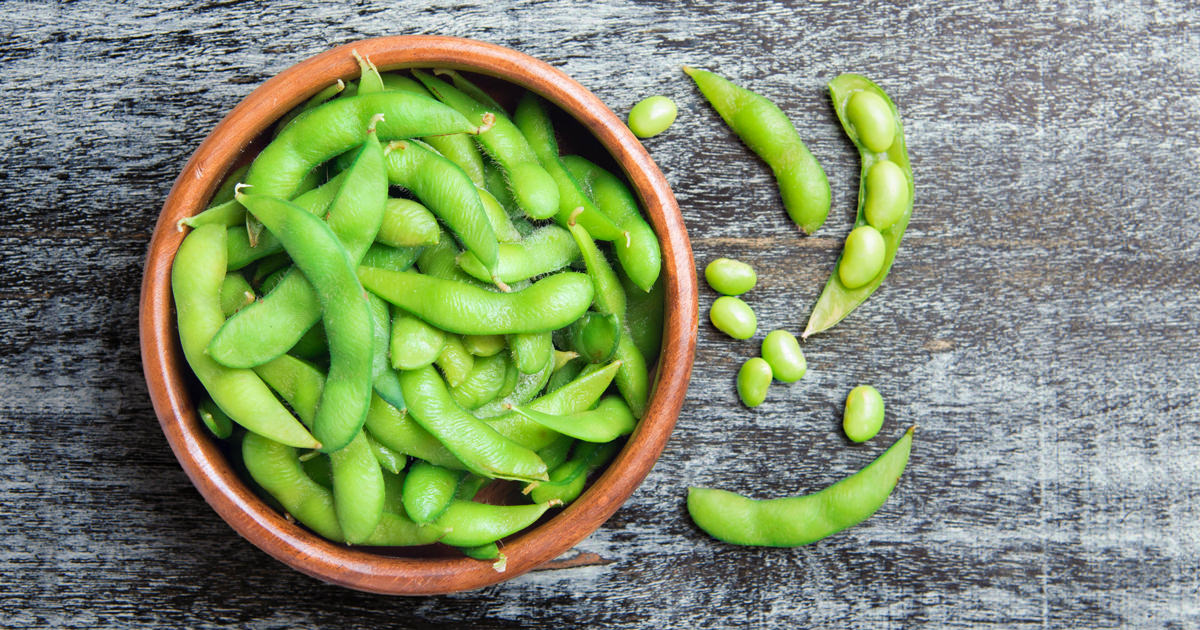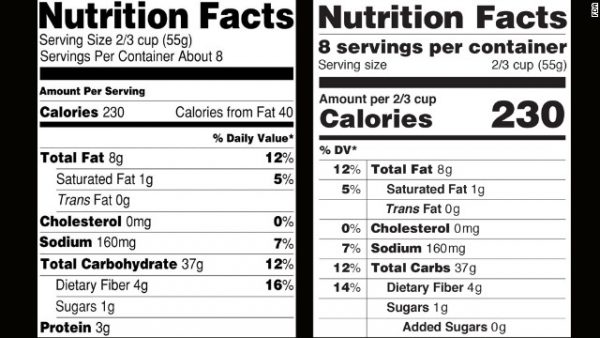44 labels on food explained
Food Expiration Dates - Here's What You Need to Know | Allrecipes The label will look like a three number code that represents the day of the year that it was packed. For example, 001 would refer to January 1, and 365 would refer to December 31. Freeze By This date indicates when a product should be frozen to maintain peak quality as long as it's frozen. How to Know If Food Has Gone Bad Nutrition Labels, Explained | The History & The Nutrients | Can You ... This law created the nutrition label as we now know it, requiring the following nutrients to be included: calories, calories from fat, total fat, saturated fat, cholesterol, sodium, total carbohydrate, dietary fiber, sugars, protein, vitamins A and C, calcium, and iron. Additional nutrients, like trans fat, were added later.
techcrunch.com › gadgetsGadgets – TechCrunch Apr 28, 2022 · Meet Pixy, Snap’s little flying companion. Pixy is a mini drone that can act as a camera sidekick when you can’t ask someone to take a video of you.

Labels on food explained
The Best Label Software for the Food & Beverage Industry The best label software for the food and beverage industry for staying compliant with food labeling regulations and keeping consumers safe is a solution that has multiple functionalities that can help you do so. ... On-Demand Color Labeling Explained BY: NICK RECHT / DATE: 08/07/2019 / TOPICS: MANUFACTURING, SHIPPING & RECEIVING, AUTOMOTIVE ... Understanding Food Labels - Nutrition: Science and Everyday Application The value printed on the Nutrition Facts panel is the percent DV, which tells you how much one serving of the food contributes towards meeting the daily requirement for that nutrient. The FDA uses the following definitions for interpreting the %DV on food labels:4. 5%DV or less means the food is low in a nutrient. What Do Food Labels Mean? - FoodPrint The grocery aisles are chock full of food labels and claims, calling out everything from "natural" to "organic." It can be hard to figure out which labels matter and which are meaningless marketing claims. Some food labels are certifications. This means they meet certain standards and have been verified by a third-party certifier.
Labels on food explained. Figuring Out Food Labels (for Kids) - Nemours KidsHealth The Nutrition Facts label gives you information about which nutrients (say: NEW-tree-ents) are in the food. Food contains fat, protein, carbohydrates, and fiber. Food also contains vitamins, such as vitamin D, and minerals, such as calcium and iron. Your body needs the right combination of nutrients to work properly and grow. How to understand food labels - Eat For Health Sometimes labels will include nutrition content claims like 'low fat', 'reduced salt' or 'high fibre'. These claims can only be used if the food meets certain criteria. For example, with a 'good source of calcium' claim, the food must contain more than a set amount of calcium. While nutrition content claims can generally guide ... Understanding Dates on Food Labels - Eatright.org These are found primarily on perishable foods such as meat and dairy products. "Closed Dating" is a series of production numbers used by the manufacturer to indicate when a product was made. They primarily appear on shelf stable products such as cans and boxes of food. Except for infant formulas, product dates are not expiration dates. › diet › featuresWhat You Need to Know About Food Expiration Dates Around 90% of people in the U.S. don't understand expiration dates on food labels. They throw away food that is still good or could be frozen for later. Your food may be good for slightly more ...
Food Labels Explained: What Do All Those Terms Really Mean? This label has the most specific criteria and legal weight. 100% organic means that the entire product contains only organically produced ingredients. "Organic" means the product has to be made with 95% organically produced ingredients. "Made With Organic Ingredients" means 70%. ec.europa.eu › info › food-farming-fisheriesQuality schemes explained | European Commission Agricultural and food products. Specifications. Raw materials and animal feed comes from mountain areas. For processed products, production should take place in such areas as well. Report: Labelling of agricultural and food products of mountain farming Check the label | Food Standards Agency The traffic light label is colour coded and shows that green is low in a particular nutrient, amber means medium and red is high in a nutrient. Red means the product is high in a nutrient and you... Food labels - NHS Most pre-packed foods have a nutrition label on the back or side of the packaging. These labels include information on energy in kilojoules (kJ) and kilocalories (kcal), usually referred to as calories. They also include information on fat, saturates (saturated fat), carbohydrate, sugars, protein and salt.
Packaging and labelling | Food Standards Agency Food businesses must include a business name and address on the packaging or food label. This must be either: the name of the business whose name the food is marketed under; or. the address of the business that has imported the food. Food products sold in NI must include a NI or EU address for the food business. Food labels explained | BHF Food labels explained Learn how to understand front-of-pack food labels, and how they can help you make heart-healthy choices more easily. When the Government recommended a front-of-pack food labelling system to all food retailers and manufacturers, we were thrilled that our campaigning efforts had paid off. Food Labels Explained - Farm Aid Organic labels can be found on produce, dairy, meat, processed foods, condiments and beverages. Food products labeled "organic" must contain at least 95% organic ingredients with no synthetic growth hormones, antibiotics, pesticides, biotechnology, synthetic ingredients or irradiation used in production or processing. › thought-leadership › blogWhat Is BRC? Global Food Safety Standard Explained - Ideagen Jun 06, 2017 · The British Retail Consortium (BRC) first published its Global Standard for Food Safety in 1998. Developed to help the food industry comply with UK and EU food safety laws, it's become an internationally recognised benchmark for best practice in food safety, quality and responsibility, with over 17,000 BRC-certified sites worldwide.
How to Read Carbohydrates on Food Labels - GlycoLeap That would be around 15 to 30 g of carbohydrates. Snack = 15 - 30 g of carbohydrate. For the main meals (breakfast, lunch, dinner), 2 to 3 servings of carbs would be enough. That is about 30-45 g of carbohydrates. 3 servings of carbohydrates are about the size of 1 fist size of rice.
10 Rules For Reading a Food Label - YouTube The basics for understanding a nutrition label are important for every person to know. This video presents clear rules to properly read a food label. This vi...
blog.cheapism.com › food-expiration-datesFood Expiration Dates Explained | Cheapism.com It's been estimated that more than a third of the food produced in the United States is wasted every year, costing the average American family about $1,500.And more than 90 percent of Americans have been throwing away food that's safe to eat because they're misinterpreting food labels, according to a 2013 study by the Natural Resources Defense Council and Harvard Food Law and Policy Clinic.
Food labels explained | SA Health Why the need for food labels. Food labels provide information to help us make healthier and safer food choices. They: tell us which nutrients, in what amounts, are in a product. warn us if a food contains food allergens. inform us if the food is fresh or out of date. explain how to store, prepare or cook the food we buy. list product ingredients.
How To Read Food and Beverage Labels | National Institute on Aging There are three types of product dates commonly printed on packaged foods and beverages: "Sell by" tells how long the manufacturer suggests that a store should sell items such as meat, poultry, eggs, or milk products. Make sure you buy by this date. "Use by" tells how long items will be at peak quality.
Understanding Food Nutrition Labels | American Heart Association Learn what to look for on the label. 1 - Start with the serving information at the top. This will tell you the size of a single serving and the total number of servings per container (package). 2 - Next, check total calories per serving and container.
Read the Label Youth Outreach Materials | FDA Read the Label Youth Outreach materials challenge kids (ages 9 to 13) to look for and use the Nutrition Facts label on food and beverage packages. The materials include fun, easy tips and targeted ...
Nutrition Labels: A Comprehensive Guide to Choosing Healthy Foods Labels note that the percentages will vary based on your individual caloric need. According to the FDA, a DV of 5% is low and a DV of 20% is high. Aim to find foods that have a higher DV for vitamins and minerals and a lower DV for unhealthy fats, sodium, and cholesterol. Ingredients
How to Understand and Use the Nutrition Facts Label | FDA In the following Nutrition Facts label we have colored certain sections to help you focus on those areas that will be explained in detail. Note that these colored sections are not on the actual...
Food labelling and packaging: Overview - GOV.UK Packaging. If you package food yourself, you must use packaging that's suitable for food use. Suitable packaging is marked 'for food contact' or has a symbol on it that looks like a wine ...
Food labelling | Food Standards Scotland Food labels are an excellent way of helping us make healthier choices, and many food and drink manufacturers and retailers use colour coded front of pack nutrition labels. These labels provide easy to understand information about calories and the levels of fat, saturated fat, sugars and salt in a product.
How to Read Nutrition Information → Food Labels EXPLAINED We want foods that are high in nutrients and we want to avoid empty calories. You'll learn about calorie density and other nutrition label reading basics in this nutrition label video. Ingredient...
› understanding-food-labelsUnderstanding food labels | Diabetes UK The labels show how many calories are in the food or drink and are also colour coded to show whether the food is low (green), medium (amber) or high (red) in fat, saturated fat, sugar and salt. The information on the front of the pack also tells you how the portion of the food contributes to the Reference Intake (RI) of an adult.
Shop Smarter: 6 Common Food Labels, Explained - Life by Daily Burn 6 Common Food Labels, Decoded You'll come across a plethora of food labels at the grocery store, but these are the six most common front-of-package food claims. Here's your need-to-know from a nutritional standpoint. 1. "Fortified With" You'll often see this label on cereals, yogurt and even milk.
Food Labelling Explained - Freddy Hirsch You have to declare the presence of allergens such as wheat, soy and nuts on the label in a prescribed format and special label declarations and procedures apply to products which may possibly become contaminated with allergens through being manufactured, stored or distributed in the same facilities where allergenic materials are also present.
› baby-food-stages-andBaby Food Stages on Labels—What Do They Mean? Oct 31, 2021 · The popular brand Gerber has registered trademarks for "1st Foods," "2nd Foods," and "3rd Foods." Other brand labels simply use "1," "2," or "3," which some companies use to refer to the age of the baby and others use to define the stage in which the baby is ready for a certain type of food.














Post a Comment for "44 labels on food explained"